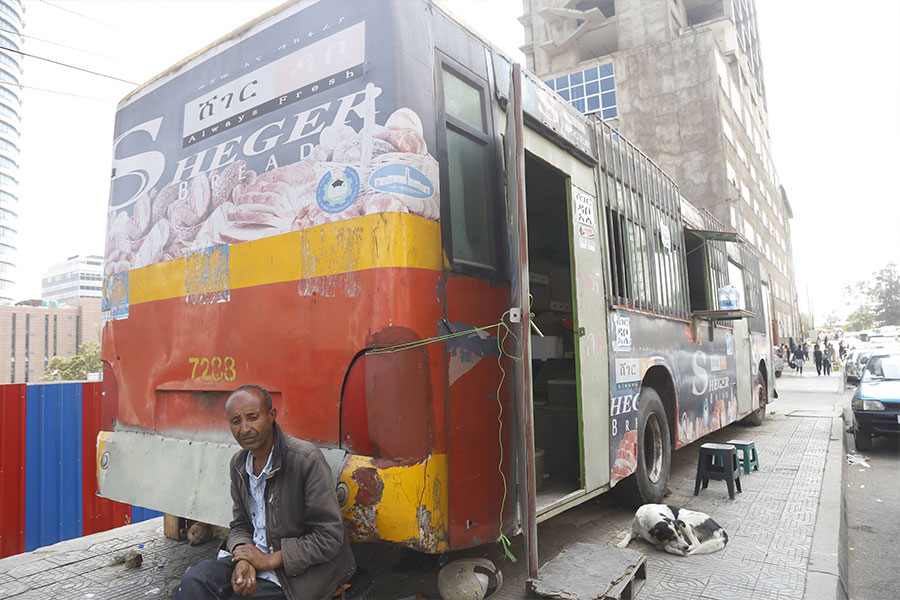
My Opinion | Mar 01,2024
Not long ago, Ashenafi Ayalew, 41, would have laughed if told he could generate over half a million Birr from growing avocado on a hectare of land. A father of five, Ashenafi has spent the better part of his life engaged in growing wheat and teff on over 30ht of land in Lemu Wereda of East Shewa Zone, in Oromia Regional State.
Ashenafi spent his days toiling over the land, and the best yield he could hope for was 30 quintals of wheat from a hectare. Recently, he has been selling a quintal for close to 3,000 Br in the markets near his farmland. The work was challenging, but he stuck with it; he did not have many options.
That all changed three years ago. Ashenafi and two other farmers in the area received training on cultivating avocado. The Agricultural Transformation Agency (ATA), now Institute, was behind the training Ashenafi and his neighbours took. They decided it could not harm to give it a chance and Ashenafi planted avocado trees on a hectare of their land. His bet has paid off. Last month, he was the first to export avocado from a yield of 100qnt, pulling in 600,000 Br from the crops.
"It's a life-changing opportunity," said Ashenafi.
His achievements did not go unnoticed. He was honoured at an agricultural conference held earlier this month with Shmelis Abdisa, president of Oromia Regional State, and Oumer Hussein, minister of Agriculture, present. It may take three years for an avocado tree to mature. Once it does, it can yield up to 50Kg of fruit every six months if used in tandem with irrigation.
A kilo of avocado goes for around 40 Br in markets in Addis Abeba. Exported, it may earn 10 times, particularly in North America and Europe where there is a considerable demand for the fruit.
Mexico, the Dominican Republic, Peru, and Colombia are the largest avocado exporters in the world. Proximity makes these countries prefer to ship their product to the US, where consumers could spend two dollars on a single avocado fruit. This imbalance has left European and Middle Eastern markets without a dependable supply.
Ethiopia is trying to capitalise on this shortfall.
The number of farmers engaged in growing avocado for the commercial end has been increasing rapidly. It almost doubled last year from 1.8 million farmers three years ago, according to the Ethiopian Statistical Service (ESS). The total farmland used for cultivating the fruit also jumped by 70pc to 30.6ht during the same period. With this came significant growth in production, shooting by a little over 200pc in the past three years, reaching 2.45 million quintals.
Farmers like Ashenafi exported close to 3,000tn of avocado last year, either fresh or dried. This put Ethiopia on the map of avocado exporting countries, generating around 800,000 dollars. Seemingly a fraction of the total export earnings of over three billion dollars last year, this is a value 800pc more than four years ago.
Ethiopia exports the Hass variety of avocado, the most prevalent accounting for 80pc of cultivated avocados globally. Ever since the variety was introduced from Israel four years ago, the Agricultural Transformation Institute has been seedling the variety at its nursery stations, distributing it to farmers like Ashenafi at the end of the training, and creating market links. The Institute provides support to 53,000 smallholder farmers in four regional states, including Oromia and Amhara regional states. These farmers produced 1.1 million quintals of avocado last year.
There are only 15 commercial avocado farms in the country. However, a growing number of farmers are shifting from cultivating other crops to avocado, says Techane Adugna, director of agriculture commercialisation at the ATI.
“Some farmers in avocado-friendly environments are shifting from cultivating teff,” Techane said.
It seems an observation consistent with the declining trend in the number of farmers growing teff. It dropped to 6.8 million last year from 7.2 million the year before.
This can be attributed to many factors, according to Beyene Tadesse (PhD), an agricultural economist engaged in research.
“Factors such as the introduction of new technologies and the easy adaptation behaviour of other crops are the major reasons that force farmers to shift from teff to other crops,” he said.
However, the rapid growth both in land size and productivity remains far from matching the demand.
Tewodros Zewdie is the executive director for the Ethiopian Horticulture Producers Exporters Association (EHPEA). Many of the Association's 120 members are involved in the export of flowers, including its Chairperson, Zelalem Mesele. However, the Association has 15 requests from buyers in Europe and the Middle East on hand, each interested in buying an average of 20tn of avocado every week. Tewodros sees the demand as a golden opportunity.
“Only a few of the domestically produced avocados make for export,” he said.
Last August, 24tn of avocado harvested from Koga, near Bahir Dar in Amhara Regional State, was shipped to Europe. Packed in refrigerated containers, the avocado arrived in the United Kingdom three weeks shipped from the Port of Djibouti. Compliance with hygiene, packaging and product quality standards determines when targeting the export market. Here is where the government should come in handy to commercial farmers, says Tewodros. Making land available, training and agro-logistics services are some of the ingredients the Director believes are lacking.
The biggest challenge is perhaps transportation. The unavailability of refrigerated containers in Ethiopia, coupled with the high cost of air and ship transportation, has stunted the growth of avocado exports.
However, the prospect for avocado farming and export looks promising. Farmers like Ashenafi have no plans of slowing down. He has two hectares of avocado trees waiting to be harvested in a few months, with plans to convert more of his wheat and teff fields to avocado. Other farmers in his vicinity have also taken the cue, with no less than 54 of them getting started on the lucrative endeavour.
PUBLISHED ON
Oct 30,2021 [ VOL
22 , NO
1122]

My Opinion | Mar 01,2024

Radar | Dec 19,2021

Radar | Jan 27,2024

Agenda | Dec 19,2021

Radar | Nov 26,2022

Fortune News | Sep 30,2023

Sponsored Contents | Aug 16,2021


Fortune News | Oct 02,2021

Fortune News | May 14,2022

Dec 22 , 2024 . By TIZITA SHEWAFERAW
Charged with transforming colossal state-owned enterprises into modern and competitiv...

Aug 18 , 2024 . By AKSAH ITALO
Although predictable Yonas Zerihun's job in the ride-hailing service is not immune to...

Jul 28 , 2024 . By TIZITA SHEWAFERAW
Unhabitual, perhaps too many, Samuel Gebreyohannes, 38, used to occasionally enjoy a couple of beers at breakfast. However, he recently swit...

Jul 13 , 2024 . By AKSAH ITALO
Investors who rely on tractors, trucks, and field vehicles for commuting, transporting commodities, and f...

Oct 18 , 2025
The political establishment, notably the ruling party and its top brass, has become p...

Oct 11 , 2025
Ladislas Farago, a roving Associated Press (AP) correspondent, arrived in Ethiopia in...

Oct 4 , 2025
Eyob Tekalegn (PhD) had been in the Governor's chair for only weeks when, on Septembe...

Sep 27 , 2025
Four years into an experiment with “shock therapy” in education, the national moo...